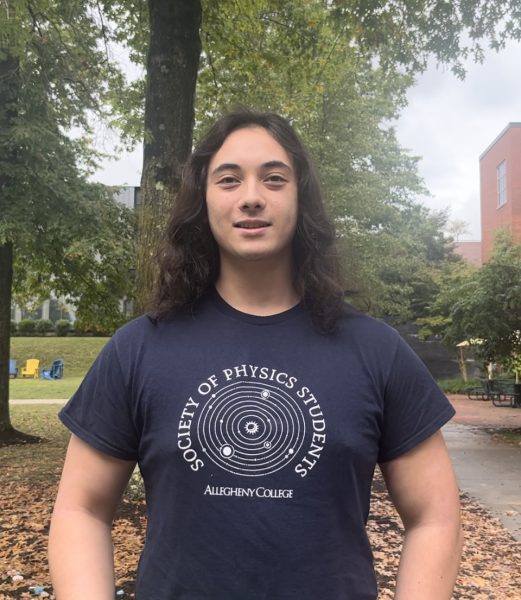Victims of Tree of Life Shooting remembered with a discussion on anti-Semitism
Sunday, Oct. 27, marked the one-year anniversary of the deadly shooting that took place at Tree of Life Synagogue in Pittsburgh’s Squirrel Hill neighborhood.
In less than 11 minutes, 11 people who had gathered for Sabbath services in the three separate congregations housed within the synagogue were killed.
Students, faculty, staff and community members gathered in Tippie Alumni Center at Cochran Hall on Sunday to remember the victims of the Tree of Life Shooting and have a conversation about anti-Semitism in the United States.
Assistant Professor of Religious Studies and Director of Jewish Life Adrienne Krone and members of Hillel led the memorial.
“We just wanted to make sure we mark the anniversary of this event that happened so close to us, so close to some of our hometowns, in our hometowns and to the Jewish community,” Krone said.
Astrid Mueller, ’21, began the memorial with a reading of “After a Deadly Anti-Semitic Attack.”
The reading was originally titled “For the Jews of France,” and was written following the violence in Toulouse that took place in 2012. Since, the reading has been adapted in response to individual situations involving antisemitic terror.
Sarah Teel, ’21, followed with a reading Barak Levin, ’19, shared at the Nov. 1, 2018 vigil titled “We Remember Them.”
“‘For as long as we live, they too will live, for they are now a part of us as we remember them,’” Teel read.
A Yahrzeit candle was lit for each of the 11 men and women killed in the attack — Joyce Fienberg, 75, Richard Gottfried, 65, Rose Mallinger, 97, Jerry Rabinowitz, 66, Cecil Rosenthal, 59, David Rosenthal, 54, Bernice Simon, 84, Sylvan Simon, 86, Daniel Stein, 71, Melvin Wax, 87, and Irving Younger, 69.
“Traditionally, you light (Yahrzeit candles) for 24 hours on the anniversary of a Jewish person’s death, so as not to leave fire hazards in Tippe, we will be blowing them out somewhat unceremoniously when this is over,” Krone said.
An additional candle was lit for “all other victims of terror in this past year.”
The readings and candle lighting were followed with the reading of the Mourner’s Kaddish.
“For Jewish folks, there are copies of the Mourner’s Kaddish,” Krone said. “Some folks have the tradition of always reading it because you never want to get to a place where you have said it enough that you have memorized it, even though most of us have.”
Following the reading of the Mourner’s Kaddish, Krone led a conversation on anti-Semitism in the United States.
“Anti-Semitism is a problem for Jews, but it is not a Jewish problem,” Krone said. “I wanted to go through a little bit of how we got here. Hopefully what we can take with us tonight back out into the world is preventing future events like this from happening or even just preventing people from not understanding what happened.”
To understand the terror that occurred in Pittsburgh, one must look back to the Medieval period, according to Krone.
Krone explained that during the Medieval period, Jewish people started to work as money lenders, because it was an occupation that was available to them and often the reason they were permitted to migrate to new countries.
“They needed people to money lend because Christians were not permitted to, so the leaders would bring Jews in,” Krone said.
The profession of money lending was useful to Jewish people because it was both portable and profitable, according to Krone.
“Jews were taxed at higher rates in most places than Christians, so (money lending) allowed them to make money and survive,” Krone said. “This profession was the result of anti-Jewish oppression, but it also created anti-Jewish oppression.”
Another main cause of anti-Semitism is that it hides in plain sight, according to Krone.
“(Anti-Semitism) works best when Jews are successful — unlike other forms of oppression that work best when people are beat down to their least,” Krone said. “Anti-Semitism takes on this invisible identity where it is not easy to see it, because it looks from the outside like Jews are pretty successful.”
Krone also explained that another source of anti-Semitism is the fabricated document, “The Protocols of the Elders of Zion,” which first appeared in Russia in 1903 before being translated into many different languages.
“(The Protocols of the Elders of Zion) purports to be this secret document of a Jewish group of leaders who are planning for world domination,” Krone said. “It was published by Russians in Russian and it’s not true.”
“The Protocols of the Elders of Zion” spread the falsified conception that Jewish people were trying to dominate the world and needed to be stopped, which is another stem of anti-Semitism, according to Krone.
Following the spread of these anti-Semetic ideas, universities adopted quotas and would only admit a certain number of Jewish students per year, according to Krone.
“They didn’t want too many Jews to have access to power,” Krone said. “Jews ended up working in clothing, real estate and in the media.”
Once Jewish people began working in the media, the misconception that “Jews control Hollywood,” spread rapidly, according to Krone.
“Again, it was an occupation that (Jewish people) actually had access to,” Krone said. “All of these oppressive pieces of systems that Jews are living in come in and then get used against them.”
Krone explained that Jewish people were pushed into careers in money lending and the media, and then misconceptions such as “(Jews) are trying to control us with their money lending” and “They are trying to control us with what they are putting out and Hollywood,” were conceived.
“Global white supremacy and Global white nationalism, which is showing up in countries all over the world, relies on, as an essential piece, what is called the great replacement theory,” Krone said.
The great replacement theory is the idea that if the world is becoming more multicultural, it is not because people are equal but because “someone is pulling the strings,” according to Krone.
“The great replacement theory is this idea that this country — whichever country, but we will talk about ours — is looking more diverse and becoming more multicultural because Jews want it to be, kind of at the opposition of white supremacists,” Krone said.
Krone explained that when white supremacists were marching with tiki torches in Charlottesville, Virginia, chanting “Jews will not replace us,” they were talking about the great replacement theory.
“This great replacement theory is causing people to lash out on Jewish communities,” Krone said. “All of this is how we got to what happened in Pittsburgh. The shooter, who I will not name, identified with this theory.”
Krone discussed how society can move forward and dismantle anti-Semitic misconceptions. Audience members recognized the need to confront misconceptions, intervene, ask questions, vote and ultimately “be stronger than hate.”
Hannah Schaffer is a junior majoring in community and justice studies and minoring in economics and journalism in the public interest. This is Schaffer’s...





